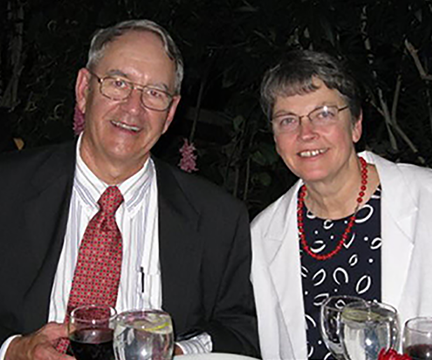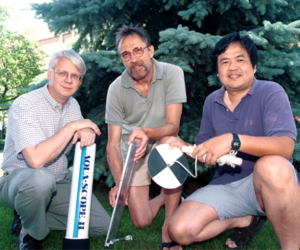A donation to NALMS supports lakes, reservoirs, and watersheds … plain and simple! If you’re curious about where your gift will go, or what program you should support, take a peek below at a description of each donation fund. Thank you for your support!
NALMS Lake Givers Club
North America’s lakes, reservoirs, and watersheds need your support … and NALMS can help! Our educational publications and programs offer an excellent first step toward the responsible management and protection of our lakes and reservoirs. NALMS provides information to inform the actions that will positively affect the quality of our lakes, our drinking water and supply, our freshwater fishing industry, recreational opportunities, and tourism industries.
The Lake Givers Club provides a way for individuals and organizations to make a significant contribution towards the management and protection of lakes and reservoirs. Contributions to the Lake Givers Club may be applied in the following ways:
- Publications
LakeLine Magazine, Lake & Reservoir Management Journal, and other NALMS publications - Programs
Certification, Inland HAB program, and Lakes Appreciation Month - Operations
Office equipment, supplies, and other expenses
Eberhardt Memorial Student Fund
NALMS students are the future of our organization. By donating to the Eberhardt Memorial Fund, you support NALMS’ student programs, including travel grants to attend our yearly symposium.
. . . . .
About Tom & Elinor Eberhardt
Tom and Elinor were givers. The Eberhardts gave to their community and they gave to NALMS. NALMS will miss Tom and Elinor, who tragically died together in a plane crash on December 30th, 2010. However, the upbeat, indomitable spirit and energy that they have shared and passed on to their family, friends, and community remind us of them every day. NALMS founded the Eberhardt Memorial Student Fund in 2011 to commemorate Tom and Elinor’s life and to continue their legacy of giving by supporting NALMS student members.
Ann St. Amand Early Career Fund
Like NALMS students, early career members are vital to the success of our organization now and into the future. To assist early career members as they join the workforce, we have set up this fund to help with costs associated with attending the yearly symposium, as well as expanding programming to benefit members in this stage of their careers.
. . . . .
About Dr. Ann St. Amand
As described by those who knew her, Ann was: a role model, loving and proud mom, caring wife, top-notch researcher, considerate employer, champion for women in science, enthralled by nature, fun to be around, always with a smile. She contributed significantly to the NALMS community throughout her career, serving as secretary and on the board of directors; teaching workshops; and participating in numerous programs to enhance the NALMS mission.
NALMS founded the Ann St. Amand Early Career Fund in 2023 to commemorate Ann’s life and to continue her legacy of supporting NALMS, especially the next generation of NALMS members.
NALMS JEDI Scholarship Fund
The NALMS JEDI program exists to amplify the work and voices of individuals who may otherwise not receive the attention they deserve. JEDI in this context stands for Justice, Equity, Diversity, and Inclusion. Our goals with the JEDI program are to provide just treatment and equitable opportunities and spaces for everyone, especially those in underserved communities. This also means providing a safe space for diverse groups of people to feel welcomed in NALMS activities and spaces. Lastly, we hope to aid in creating a level of inclusivity that makes NALMS programming more attainable for everyone, especially marginalized individuals. Funding provided to the JEDI program will allow us to facilitate more outreach and engagement opportunities as well as provide and promote more activities for diverse groups of people. Simultaneously, it will provide NALMS with a greater ability to sustain diversity initiatives and inclusive values in its accessibility and programming.
G. Dennis Cooke Symposium Fund
The G. Dennis Cooke Symposium Fund was established in November 2012 through a gift from G. Dennis Cooke, the first president of NALMS and Emeritus Professor of Biological Sciences at Kent State University. Dr. Cooke earned his M.S. and Ph.D. degrees from the University of Iowa and, after a post-doctoral at the Institute of Ecology at the University of Georgia, he joined the faculty at Kent State University, where he taught for 36 years.
The Fund provides a way for individuals and organizations to join NALMS’ effort to facilitate the exchange of information on managing lakes and watersheds. NALMS has established an investment fund with Dr. Cooke’s gift and will use the returns from this fund to support themed sessions and plenary speakers at our annual Symposium.
Dr. Robert Carlson Secchi Dip-In Fund
The Secchi Dip-In began in 1994 by Drs. Robert Carlson, Dave Waller, and Jay Lee from Kent State University (pictured) as a pilot study. Since then, it has expanded to include volunteers from across the United States.
Its purpose? The Dip-In is a powerful demonstration of the potential of volunteer monitors and citizen scientists to gather environmentally important information on our lakes, rivers, and estuaries. The concept of the Dip-In is simple: individuals in volunteer monitoring programs take a transparency measurement on one day during the month of July. Individuals may be monitoring lakes, reservoirs, estuaries, rivers, or streams. These transparency values are used to assess the transparency of volunteer-monitored lakes in the United States and Canada.
When the first Secchi Dip-In was proposed in 1994, it was hoped that the project would make it past one or two years. Thanks to the support of volunteer programs and volunteers, the North American Lake Management Society, and the Environmental Protection Agency, the Dip-In database has grown to more than 41,000 records on more than 7,000 separate waterbodies, not including different sites, such as along rivers and estuaries.
In 2015, after leading the Secchi Dip-In for 20 years, Dr. Carlson and NALMS entered a long-term agreement transferring the operations of the Dip-In to NALMS.
. . . . .
About Dr. Robert Carlson
Dr. Robert Carlson was an inspiration to his students, colleagues, and his NALMS friends.
Bob’s Trophic State Index (TSI) paper, published in 1977, started a decades-long conversation and continued study on how to understand and measure the trophic state of lakes using Secchi Depth, Total Phosphorus and Total Chlorophyl. This approach has been tested, tweaked, and refined over the years to help lake managers and citizen scientists track lake water quality with one simple tool – the Secchi Disk. In addition to Bob’s Secchi Dip-In efforts, he was instrumental in setting up the Ohio Lake Management Society’s citizen scientists that have been collecting TSI data in Ohio since 1989.
Bob passed away on July 31, 2023 after a long struggle with Parkinson’s Disease; we are honored to celebrate his legacy through the Dr. Robert Carlson Secchi Dip-In Fund.


